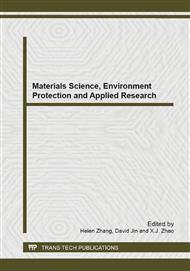p.51
p.55
p.59
p.63
p.67
p.72
p.77
p.81
p.85
Corrosion of an Austenitic Heat-Resistant Steel HR3C in High-Temperature Steam and Supercritical Water
Abstract:
By Scanning Electronic Microscope (SEM), X-ray diffraction analyzer (XRD) and Cross hatch scanning analysis method, the corrosion behaviors of the HR3C steel in high temperature steam and supercritical water was investigated. The results indicates that within the scope of these tests, the corrosion rate of HR3C steel increases with an increase in temperature, which negatively correlates with the pH value of working medium, while the pressure has fewer effects on it. For specimens with the exposure time of 100h under various corrosion conditions, the oxide films almost cant be detected on all specimen surfaces, indicating the high corrosion resistance of HR3C steel. After long time oxidation corrosion in high temperature or supercritical water, the common oxide film of HR3C steel is always composed of four layers, from the oxide layer to the steel matrix, which are Fe3O4, pyknotic Cr2O3, partial oxidation layer with rich Cr element, and (Fe, Cr) 3O4 spinel layer in turn.
Info:
Periodical:
Pages:
67-71
Citation:
Online since:
March 2014
Authors:
Keywords:
Price:
Сopyright:
© 2014 Trans Tech Publications Ltd. All Rights Reserved
Share:
Citation:


